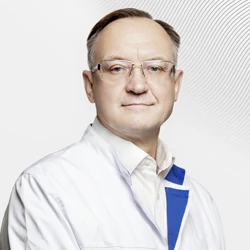Department of Oncosurgery
The doctors' equipment and experience allow us to apply not only classical, but also high-tech minimally invasive techniques, during which minimal tissue injury occurs.
Our oncosurgeons are members of international professional associations and true professionals in their field who have completed internships in leading medical institutions in Germany, the USA, France, Japan and Belgium.
EMC specialists perform operations for tumors:
- stomach
- biliary tract
- lungs
- organs of the abdominal and thoracic cavities in children
- liver
- the esophagus
- pancreas
- mediastinum
- large intestine
- small intestine
- for metastases of the thoracic and abdominal cavities
All decisions on the strategy of action and treatment in the EMC are made collectively by a council of doctors of various specialties.: oncologist, oncosurgeon, cardiologist, internist, radiotherapist, a radiation diagnostician and pathologist. This tactic allows us to take into account all the nuances, select the optimal therapy, minimize possible complications, restore the functions of the affected organs as quickly as possible and improve the patient's quality of life.
The European Medical Center offers patients support and assistance according to international standards:
- Complete diagnostics using our own state-of-the-art equipment.
- Any type of cancer treatment, including chemotherapy, radiation, hormonal, targetedand immunotherapy
- Preoperative preparation, comprehensive postoperative treatment and rehabilitation
- Completely individual approach to the patient
- Intensive careand intensive care units to help even in the most severe cases
- A comfortable hospital and meals according to an individual menu, taking into account medical indications
- Round-the-clock visits to patients, including in intensive care
What is oncosurgery?
Cancer surgery is an operation to remove a tumor and possibly some nearby tissues in order to remove all the altered cells from the patient's body. This is the oldest cancer treatment technique, still widely used and yielding excellent results.
Oncosurgery is used to perform various tasks:
- Diagnostics – making an accurate diagnosis
- Searching for cancer foci and determining their size
- Treatment – complete removal of the neoplasm
- Partial removal of the tumor, including to relieve symptoms
- Tissue reconstruction to restore the usual appearance and function of organs
- Prevention of the possible development of oncological diseases for patients who are more likely to develop them in the future.
Surgeries are performed in a doctor's office, clinic, surgical center, or hospital. The doctors who perform them are called oncosurgeons, and painkillers that allow you to avoid discomfort are called anesthesia.
If, after the intervention, the patient needs to stay in a medical facility for a night or several days, such a procedure is considered inpatient, and if it is possible to return home on the same day, it is outpatient.
Why do cancer surgeries?
There are several tasks for such interventions:
- Diagnostics. A biopsy, or the removal of a small amount of tissue for thorough examination in the laboratory, is the main way to detect many types of cancer and make an accurate final diagnosis. In a huge number of cases, it cannot be replaced by other methods, even the most modern ones.There are several types of it. A doctor can simply make a tiny incision in the skin and remove part of the tissue, obtain a small sample, or remove the entire tumor completely.A biopsy can also be less invasive, that is, it damages a minimum amount of tissue – the material can be obtained using punctures with a thin needle, including < span style="color: #790000;">control computed tomographyor Ultrasound.
- Staging, or determining the stage of cancer.Such operations are performed to determine the exact size of the tumor and detect the spread of its cells to nearby tissues. During its course, an oncosurgeon can remove the entire neoplasm, take a sample of it, or remove the lymph nodes – small organs that help us fight infections. Most often, cancer cells that break away from the main neoplasm get into them in the first place.With the improvement of medical technology, the so-called imaging research methods are increasingly being used for the staging of oncological diseases. These include Ultrasound, < span style="color: #790000;">radiography, computer, magnetic resonanceand positron emission tomography, which allows obtaining detailed images of internal tissues without incisions.The materials obtained during the biopsy are carefully examined under a microscope by a pathologist, who gives a conclusion about the properties of cancer cells and the degree of their changes. This information allows you to predict their growth rate and select the optimal treatment.
- Removal, resection, or excision of the tumor.As a rule, cancer treatment removes the neoplasm and the edge – the healthy tissues located next to it. This procedure usually involves larger incisions than a biopsy, but there are exceptions.Laparoscopic procedures are performed through tiny incisions or even punctures using special small instruments. In their course, a minimal amount of tissue is damaged, the patient experiences less pain and discomfort, loses little blood and recovers quickly.Surgery may be the only treatment option and may be combined with other methods such as chemotherapy, radial, targeted, hormonal and immunotherapy.
- Reduction of tumor size.Complete removal of a life-threatening neoplasm is not always possible, as other important tissues or organs may be damaged during such an intervention. In such situations, it is only partially deleted.Radiation and chemotherapy, or other treatment methods, are often prescribed before or after this intervention. Together, they reduce the size of the tumor, prolong the patient's life, or even completely cure cancer.
- Palliative surgery.Task < span style="color: #790000;">palliative careis aimed at improving the quality of life, eliminating or the relief of side effects and symptoms that cause cancer: - it relieves pain, which occurs, among other things, due to the pressure of the neoplasm on nerves or other tissues -stops bleeding - is used to install feeding probes or href="https://www.emcmos.ru/articles/implantiruemyy-port-zolotoy-standart-sovremennoy-himioterapii/">< span style="color: #790000">portsfor injection - prevents fractures of bones, including those destroyed by metastases – additional tumors in various areas of the body, including the spine - eliminates blockage of the digestive system and restores the functioning of other organs disrupted by overgrown cancer foci.
- Reconstructive surgery.Cancer treatment can affect the patient's appearance or complicate the functioning of internal organs. Reconstructive surgeryhelps to cope with these consequences. It can be performed both simultaneously with the removal of the tumor, and after the end of therapy or complete recovery of the patient. Basically, such interventions are performed to repair tissues after treatment breast cancer, as well as removal neoplasms of the face and neck.
- Prevention.For some patients, surgery is prescribed to reduce the risk of developing cancer. For example, if during < span style="color: #790000;">colonoscopiesreveal polyps, or tissue growths on the inner lining of the intestine, they are removed in order to so that they don't turn into over time . href="https://www.emcmos.ru/disease/kolorektalnyy-rak-rasprostranennost-simptomy-skrining-i-diagnostika/">< span style="color: #790000;">colorectal cancer. In addition, such an intervention may be recommended for women who are highly likely to develop malignant or life-threatening diseases in the future. breast tumors or ovaries.
Types of cancer removal operations
Most often, cancer surgery is a serious intervention, both doctors and scientists are constantly working to reduce the consequences.
With an "open" operation, one large incision is usually required, and recovery after it takes quite a long time.
Sometimes a specialist has the opportunity to use a so-called "minimally invasive" technique that requires small incisions or even punctures. Such procedures significantly reduce blood loss, pain, and the duration of the patient's rehabilitation.
Laparoscopic surgery. During this procedure, the specialist makes several small incisions in the skin. Through one of them, a thin tube with a camera and a light source is inserted at the end, and through the other incisions, special small tools are used to perform the operation.
Its type is robotic surgery – the use of manipulators, the precise movement of which the doctor controls through a computer, focusing on the image in the monitor.
Thoracoscopic surgeryusing a thoracoscope– an optical device in the form of a flexible tube that is inserted into a small incision in the chest. Such operations allow you to examine tissues, assess their condition, take samples, remove tumors and excess fluid.
Mohs surgery. It is prescribed for the treatment of skin cancer. After removal, each layer is examined under a microscope and removed until none of its cells arouse suspicion in the doctor.
Electrosurgery is the destruction of a tumor by electric current.
Endoscopic surgery. It is used to study the tissues of internal organs such as the colon and bladder. A thin flexible tube with a light source and a camera is inserted into the mouth, nose, anus or other opening, and an instrument passing through it takes the required number of samples.
Pain during cancer treatment surgery
Almost all operations are performed using anesthesia:
- Local – injections of drugs that cause numbness in the treated area. It is used for procedures that do not require large incisions, such as removing moles
- Regional, blocking pain in a specific area of the body. Temporarily stops the work of the nerves transmitting pain in the area where surgery is planned, as well as the surrounding tissues. Sedation is often performed simultaneously with it – the administration of relaxing and soothing medications, after which the patient remains awake or falls asleep
- A common one that puts a person into a deep sleep. Such anesthesia is necessary for serious operations. Her medications are administered intravenously or with a mask. In such cases, a tube is inserted into the throat through which air is supplied. While the patient is unconscious, the doctor constantly monitors his breathing rate, blood pressure and oxygen content in the blood.
Sources:
https://www.cancerresearchuk.org/about-cancer/cancer-in-general/treatment/surgery/about
https://www.cancer.net/navigating-cancer-care/how-cancer-treated/surgery/what-cancer-surgery
Make an appointment for a consultation and we will contact you for more details
Why the EMC
The first and only clinic in Russia, created in the image of the world's leading clinics
EMC is a multidisciplinary center offering patients a high level of medical services and a personalized approach
Worldwide recognition and awards
 Learn more
Learn more
Worldwide recognition and awards
 Certificates and licenses
Certificates and licenses
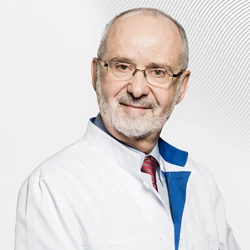

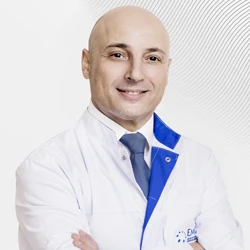



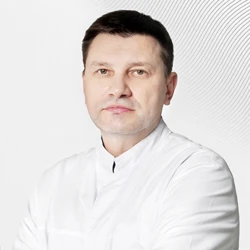
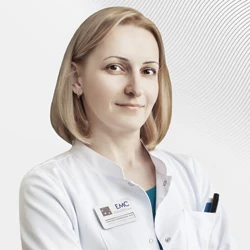


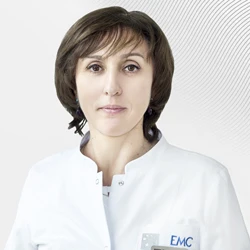
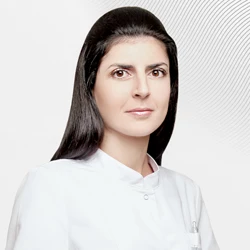



.webp)


